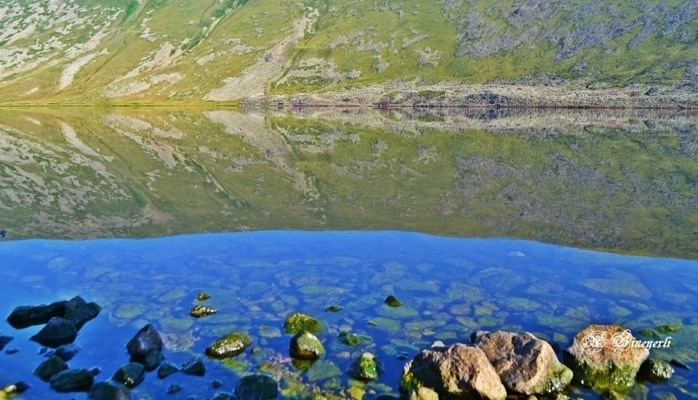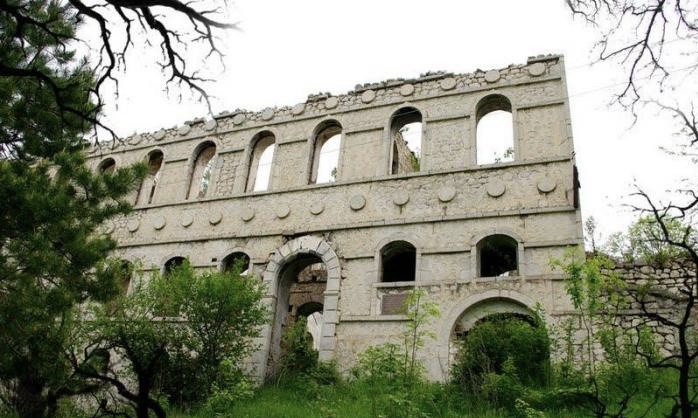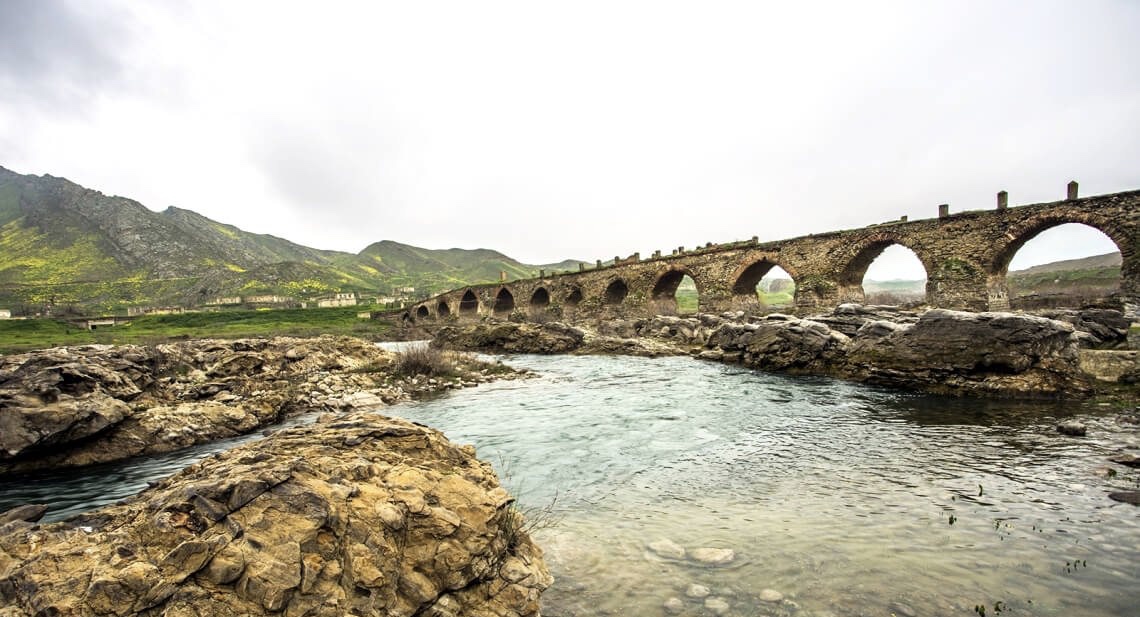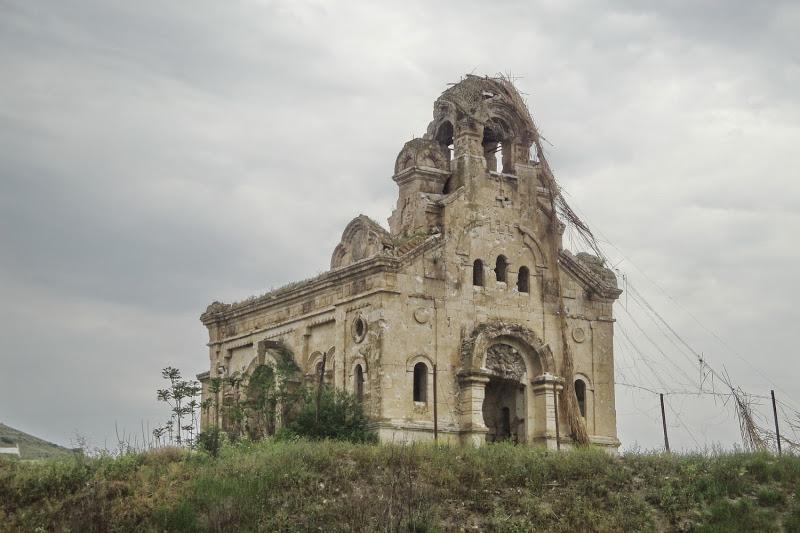






of







of







of





















Precise information about the foundation date of the Shusha fortress is given in the book “The History of Shusha City”, written by Hasan Ikhfa Alizade. According to the author, the fortress was built in 1750-1751, a date that is also accepted by many other historians.
The new fortress contained several mosques, bathhouses, bazaars, and houses, and was called ‘Panahabad’ in honor of Panah Ali Khan, the founder of the Karabakh Khanate. However, it was renamed Shusha during the reign of Ibrahimkhalil Khan, the son of Panah Ali Khan. According to the historical sources, the place that the Shusha fortress was founded by Panah Ali Khan previously was grasslands and pasturages of the ancient human settlement situated 6 km far from the Fortress and called Shishekend (Shishe village) by the local population. Therefore, even after the foundation of the Panahabad fortress, this place was called the territory of Shishe (Sh[ü]she) village, and during Ibrahimkhalil Khan’s reign, the fortress was described as the territory of Shüshe. Later, Tsarist Russia brought the name into line with the Russian dialect and it was pronounced Shusha. It is also possible to see the transformation of the word Shüshe into Shusha in archival documents of the Ottoman Empire. The name was recorded initially as Shüshe in Ottoman documents, and it was recorded as Shusha afterwards.
In the first decades of the nineteenth century, like many other khanates of Azerbaijan, the Karabakh Khanate was occupied by the Russian Tsarist Empire and Shusha became part of the Russian administrative units of that time.
As an administrative district of the Republic of Azerbaijan Shusha had gained its status on August 8, 1930. It is located in the territory of Karabakh Chain of Minor Caucasus. The center of the district is Shusha city. The area of the district is 0.29 thousand square kilometers and the population is 31,0 thousand people.
Shusha was occupied by Armenian Military Units on May 8, 1992, which were destroyed and looted by Armenians during 28 years of its occupation. Before the occupation, it had one city and one town named Turshsu, including 37 villages. The villages are Dashaltı, Goytala, Khanalı, Hasanabad, Imamgullar, Khalfali, Armudlu, Dukanlar, Garabulag, Lachinlar, Mirzalar, Shushulu, Zamanpayasi, Boyuk Galadarasi, Kichik Galadarasi, Gaybalı, Khudaverdilar, Nagılar, Yukharı Qushchular, Ashagı Gushchular, Malıbeyli, Sarıbaba, Onverst, Safikhanlar, Allahgulular, Hasangulular, Khanlıgpaya, Shırlan, Aghbulag, Jamillar, Chaykand, Imanlar, Mamishlar, Pashalar, Turabkhan, Zarıslı, Nabilar.
Before the occupation State Drama Theatre, Television, Museums of State Karabakh history and history of Shusha, memorial museums of Uzeyir Hajibeyov, Bulbul and Mir Mohsun Navvab, branch of Azerbaijan State Carpet Museum, State Gallery of Art, 4 colleges, 2 branches of Institutes, vocational school, 25 secondary schools, secondary music schools, 7 kindergartens, 8 houses of culture, 17 clubs, 31 libraries, 40 medical institutions, 2 sanatoriums, Child sanatory, Child Health Center, tourist base for 70 people, hotel, 5 culture and recreational park, 4 cinemas, public catering facilities were functioning in Shusha.
Stock-raising was a main part of the economy of the district. Lands eligible for agriculture was 20,9 thousand hectares. 3,8 thousand of it was a field for plowing, 0,1 thousand for perennial plants, 0,3 thousand hectares were hay field, 16,7 thousand hectares were pastures. Irrigated fields were 0,1 hectares. 41% of 3,4 thousand hectares field was planted with grain and bean plants (wheat, barley, corn), 6% was used for vegetable-melon plantation. Fruit-growing was also among activities. There were 5,2 thousand cattle, 15,2 thousand sheep and goats (1986). One of the occupations was poultry.
There were a factory of Eastern musical instruments, consumer combinat, baking factory, household service combinat, regional consumption community, Resort trade institution, building No.1 of Baku “Radiogurma” factory, weaving fabric of Karabakh silk combinat, the network of electricity, basis of logistics, repair and reconstruction office, restoration office of monuments, Shusha Construction Community, Reconstruction Institution between farms, Repair Reconstruction office, Repair Reconstruction Institution between farms, Maintenance of Traffic control and so on. Resort economy was developed.
Road and pipeline Yevlakh-Nakhchivan passed from Shusha. The distance between Shusha and Baku is 373 kilometers. There were 17 blockes – neighbourhood in Shusha: Gurdlar, Seyidli, Julfalar, Guyulug, Chuxur, Dordlar Gurdu, Hajı Yusifli, Dord Chinar, Chol Gala, Mardinli, Saatlı, Kocharli, Mamayı, Khoja Marjanlı, Damirchi, Hamam Gabagı və Taza mahalla. In each block there were bath, mosque and spring. Historically architect of independent Azerbaijan Heydar Aliyev called Shusha as the city of monuments which had 300 historical monuments, 550 ancient residential buildings, 870 meters long restored castle walls in 350 hectares of land. 23 of the monuments belong to republic-wide and world-wide famous monuments. The richness of national monuments, diversity in colouretness surely caused the creation of an image about Shusha as the richest land of city culture. Most of these monuments were built in the XVIII-XIX centuries. Each house, street, great castle walls, mosques, magnificent minarets, remnants of grand castles are the signs of the past.
Its area is mountainous (Karabakh mountain chain). The highest peak of it is Big Kirs (2725 m). Span Kecheldag is in Shusha. Mainly, jurassik and chalk sediments are spread here. There are different kinds of construction materials and mineral water springs (Turshsu, Shirlan). Gargar river flows from the district. Earth of it is mostly brown mountain-forest, grassland, grassy. The upper mountainous area is covered with subalp and alp meadows.
Shusha facing stone deposit, abled to produce 397 thousand cubic meters ceramic bricks production Kechaldag (Lisogor) clay deposit, with capacity 389 thousand cubic meters a day the Shusha underground freshwater deposit and with capacity 343 thousand cubic meters and 70 thousand cubic meters a day the Shirlan and Turshsu mineral water deposits.
Dashalti State Nature Reserve covering 450 hectares area was established in 1988 to protect unique natural resources in the area of Shusha and Asgaran. Shusha is a resort city due to its weather’s purity, composition, and curative importance. For that reason, Shusha was well-known not only in Azerbaijan but also beyond the borders for its recreational places and picturesque zones.
There is one flower owning special beauty in the Shusha mountains. It does not grow anywhere else. The miracle created by nature is called Khari bulbul. The topside of the flower is as if there is a nightingale on it.
Turshsu summer pastures, Sakili spring, Isa, Shamil springs, legendary “Jidir duzu” are the favorite locations of local people and guests.
Turshsu is famous as a rest and medical zone. It is located 40 kilometers from Lachin road. From the left side river, Dashalti flows. Turshsu was popular for its therapeutic and medicinal bathtubs.
One of the sightseeings in Shusha is Yukhari Dashalti. People called that place Garden of Shamil. The peculiar trait of this place is that it is situated over river Dashalti, under the mountain Uchmikh, around the spring. One of the favorite places of tourists visiting Shusha is unreplaceable and having spectacular nature – “Jidir duzu”. The western part of it consists of 3 heights standing behind one another. Those hills were named “Uchmikh”.
Tourists staying in sanatoriums and recreational centers visit those spectacular places and can not hide their surprise. Khari-bulbul festivals are held every May in one of the main recreation centers “Jidir duzu”.
Shusha was occupied on May 8, 1992, by Russian and Armenian invaders. The occupation date of Shusha was a heavy blow to Azerbaijan’s morality and severe grief for all of us. During the invasion of Shusha 200 people were killed, 150 were handicapped, 552 babies became orphan, and nearly 22 thousand people became refugees. During invasion, aggressors demolished our historical monuments and razed them to the ground as reported. Armenian military forces plundered 15 ethnographic examples, 5 copper goods, 2 silver daggers, 1 stone pot, 20 different objects and valuable possessions from Shusha city museum, 5 precious ancient carpets, 4 kilims, 5 saddle-bags, 1 valuable lamp, the portrait of Uzeyir Hajibeyov, and several historical items from Karabakh history museum, many possessions and unique objects from memorial house museums of Mir Mohsun Navvab and Bulbul.
They carried precious objects from Shusha museums to Armenia – art and architectural works, carpet productions, folk applied art examples, archeological findings, necessary documents, and memorial possessions of Azerbaijan’s outstanding personalities. Now those things are sold in auction or presented to the public as Armenian cultural samples in exhibitions and museums.
Yes, in the XX century Shusha encountered tragic events and was occupied. His children became refugees and martyrs but never bent he is still living. Population settled in 700 settlements of 58 districts.
On November 8, 2020, the Glorious Army of Azerbaijan liberated Shusha from the Armenian occupation.

Qaragol Interrepublics State Reserve was set up with the decision of the Council of Ministers dated November17, 1987. Garagol State …

The idea of establishing Aghdam Bread Museum, which is considered to be the second in the world after the Zurich …

The Khurshudbanu Natavan’s House is a historical and architectural monument of the 18th century located in the city of Shusha. …

Museum Mausoleum Complex of Molla Panah Vagif is located in Shusha, Azerbaijan. It was built in honor of Molla Panah …

The Bridge belongs to the Arran architecture school. The first written source that mentioned the 15-arched Khudafarin Bridge belongs to …

Garghabazar Caravanserai was built in 1681 at the hillside, in the center of Garghabazar village of Fuzuli district, 8 km …

Armenia’s vandalism in Nagorno-Karabakh and seven surrounding regions affected not only the historical, cultural, and religious heritage of Islam but …

Jabrayil History-Ethnography Museum has been operating since 1953. Archaeological and ethnographic materials belonging to the history of the region, textiles, …

Khudavang, or Dedeveng, Monastery Complex is located in the Vang village of Kalbajar District, on the left bank of Tartar …

“The 19th century Aghdam Juma Mosque is perhaps the only structure that has withstood the years of neglect since the …